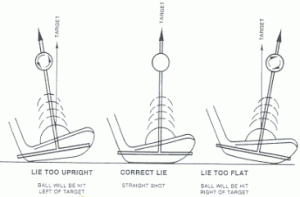[Revised July 7, 2019.]
A few years ago I started advising anyone who would listen that this is the way to build a competent, consistent golf swing: hit wedges, lots of wedges. Take the club back halfway, swing through to a full finish.
This is my second post on the subject, hence the quantifier in the title. But the notion is so important that I don’t want to let it be one and done because you might never find that first post. So I’m posting the idea again.
Actually, I should post it every other week, it’s that important, but that probably would create a different impression in your mind than emphasis, so I won’t.
There are four reasons why this is such an important practice.
1. You learn how the timing of your swing works–how all the parts work in the right order and what it feels like when they do.
2. You learn to relate distance to tempo rather than effort.
3. You learn how to hit the ball on the center of the clubface. Your score is directly related to how often you do this.
What you learn with your wedge applies to every other club in the bag. And because it is so easy to hit the wedge, you will transfer that feeling of ease to every other club and hit shots with them just as confidently as you do with the wedge.
Here’s how to do it. First, set aside twelve balls out of your bucket. Take out your sand wedge. Make four practice swings. Swing halfway going back, and follow through to a full finish. After the four such swings, pull a ball forward hit it, using the same swing you made those four times. Go through the entire rest of the bucket in this way.
Do not rush the practice swings. Take a few seconds after each one to absorb the feeling of what you just did. You’re training your mind, and that won’t happen if you don’t give it a chance to soak in what it just did.
When you have emptied your bucket, take those ten of the balls you set aside and go through your bag, hitting each club, going from pitching wedge to driver, one swing each, a full swing, with the same timing and tempo that you used with all those sand wedges you hit. During this drill you will realize the fourth very important point:
4. You swing your driver just like you do your 9-iron, and you swing your 9-iron just like you do your driver. Ditto for every club in between.
You have two balls left. End the session by going back to the start: four half-swings with a sand wedge, hit one ball. Repeat.

